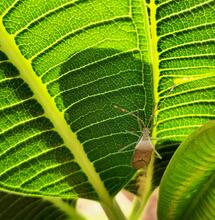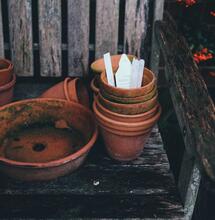Irrigating the soil the right way

For beginners, we recommend growing on an earth substrate, which most likely helps obviate errors; what is more, irrigation requires no EC and PC measuring instruments at all. Growing plants on soil is often less expensive in the start-up phase. But even on an earth substrate errors can be made.
A typical error is buying seeds worth 100 euros and procuring soil from a supermarket at a price of 3.99 euros. This means that, for ten euros saved, you can spoil the result of an investment worth 500 euros. All growers with a little bit of experience will tell you that you should not use cheap soil but rather good garden soil. Practically speaking, any branded product is good, including those purchased from a garden centre. However, there are soil types that befit specific environments and climate conditions; for instance in a very dry grow-room you can avoid using pearlite as it favours evaporation. Growers who regularly irrigate their crops, instead, should mix the soil with large amounts of pearlite. The point made in this article about irrigation is that water should be delivered to the soil in the correct quantity.
Many people invest the right amount of money in soil-substrate growing but do not irrigate correctly, which will ultimately cut by half their yield. There are people who water plants every day until water flows out; other people irrigate when leaves start to hang on plants, and there are even those who have simply learned on the Internet that, when a plant reaches a certain size, they should deliver 200 ml of water, which is wrong as watering depends on the initial climatic situation and the type of pot. It should in the first place be considered what the optimal conditions are for the development of the radical part of the plant. A plant can grow up to a size that is correlated to the development of its roots, which however does not only depend on the pot size but also on the condition of the used substrate.
Soil temperature should range between 18 and 23° C, the PH value should be between 5.5 and 6.5 and the EC value should be fit to the growth phase and be achieved through the required quantity of nutrients and trace elements. But this may not suffice, even if conditions are optimal. Pots should be sized commensurately with the amount of water and air to be received by the plant roots. If the pot is drenched by water, the plant roots will receive no air and, even in larger pots, will stop performing their functions, the plant will stop growing and undergo damages. If the earth is excessively dry, the root functions will equally stop. The plant will stop growing and be left with hanging leaves. The best condition is when the soil is wet but not excessively drenched, which helps absorb air for root breathing.
How is it possible to irrigate in such a way as to leave the soil wet and airy? This is very simple: every day or every other day you should lift up the pots and those that are still heavy should not be watered. All others, instead, should be abundantly watered in such a way as to let water flow out and leave the soil wet. If plants remain without air for a few hours on the floor, it will not be a bad thing. Water in excess will flow away and this will cause the soil to become airy again. By contrast, if you water plants directly again, the soil will be permanently wet, which will make the plant suffer. If you only water again when pots are lighter, instead, the plant will for the most part have enough air for root breathing. It is practically irrelevant if plants remain drowned for 12 hours. However, if after a few days the pot becomes lighter, it should be properly watered. If the soil is bone dry, the plant will stop growing and even wither in two days’ time. Excessively dry soil cannot withhold water and must be watered again after at least 20 minutes in order to absorb water.
In addition, water should be delivered at lukewarm and not cold temperature, not to cause a shock in the roots. Many people do not have the habit of lifting up pots and tend to water abundantly if they see dry earth on top of each pot. Depending on the soil, however, the upper layer could dry up, whereas the core could still be damp. If water continues to be delivered, it will be too much and the plant will be damaged. There are soil types, instead, in which, despite abundant watering, if the above layer is dry, this means that the whole soil block is dry. For different types of substrate mixtures, therefore, the dryness of the upper soil layer is a giveaway for lifting the pot. It the pot is still heavy, there is no need to water. If, on the other hand, the pot is lighter, then you should water plants as usual.
If you water abundantly in a grow tent with thick soil and the water forms a puddle, there may be pots that are so flat that the water puddle will be on the same height as the soil. Water will be absorbed into the soil, which could lead again to a build-up of damp in the event of a highly absorbing type of soil. Normally this is remedied by using dry soil or by raising pots to a higher level, e.g. by using stone tiles or stones; wood or polystyrene would instead get mouldy. Plastic spacers could also be used. Growers should therefore abstain from watering blindly in accordance with a rigid schedule, as watering should also be adapted to the type of soil. Growers should also regularly see which pots need watering and avoid watering others.
In the initial phase of plant growth, watering intervals can last several days; for larger plants that need more water, intervals should be shortened. If a very small plant, which does not require much water, is placed in a large pot with a soil substrate that is prone to water build-up, intensive irrigation can be counterproductive. If the water requirement still needs to be determined, then either the interval of the next watering cycle should be changed or the soil should be mixed with pearlite, for the soil to be aired even if it is wet. Even when you do everything right, if watering is wrong, your yield will be less than half of what you expect. Conversely, if many errors are made, even with the right watering technique no perfect results can be obtained. However, those who seek perfect results and grow on a soil substrate should absolutely refine their watering technique. Many inexperienced growers only need to irrigate correctly to harvest much larger quantities of good weed!



.png)